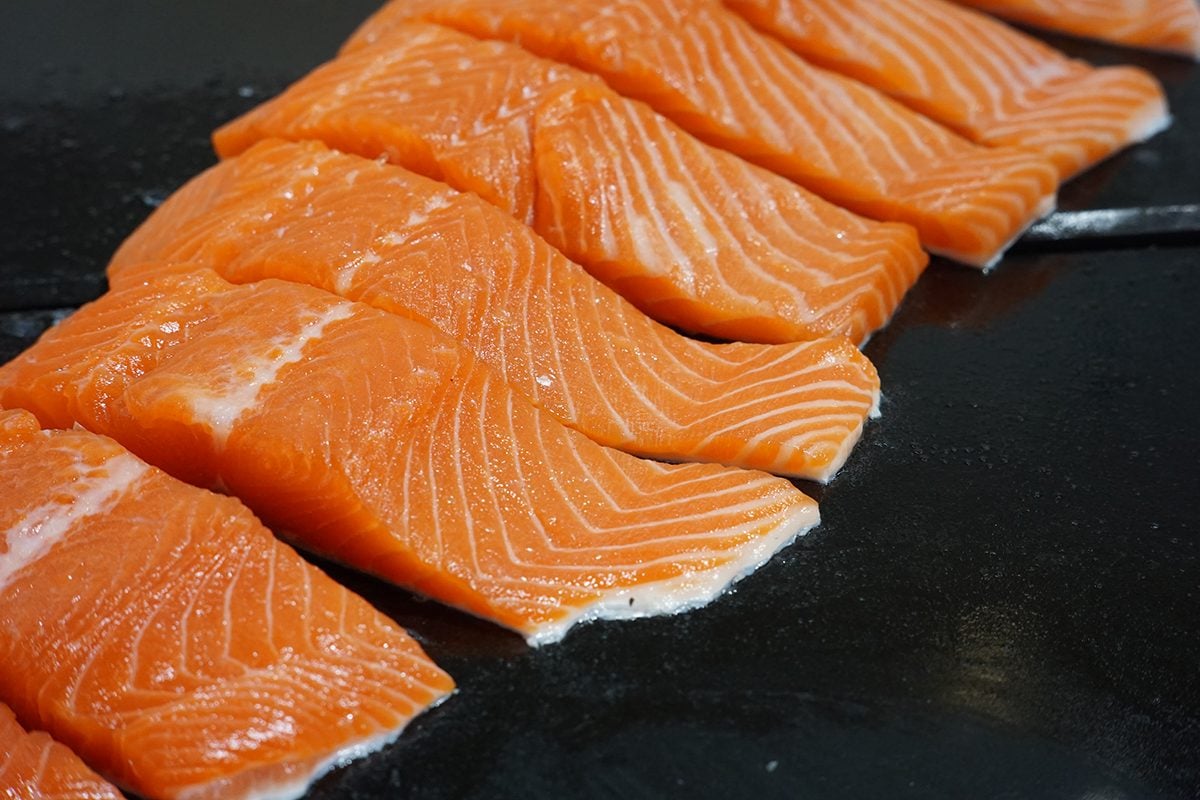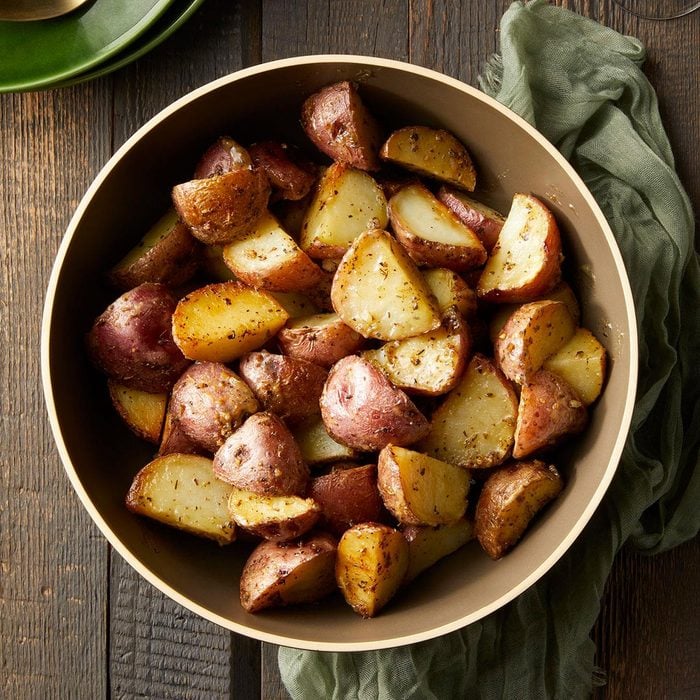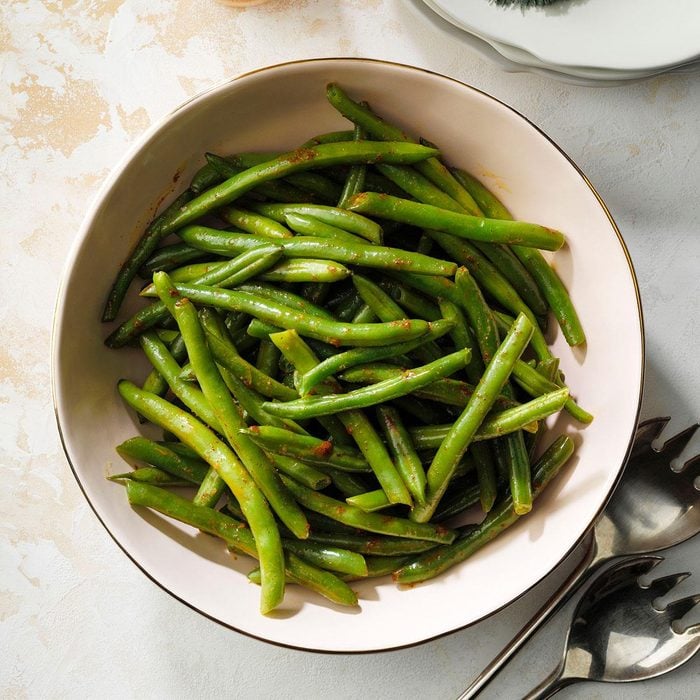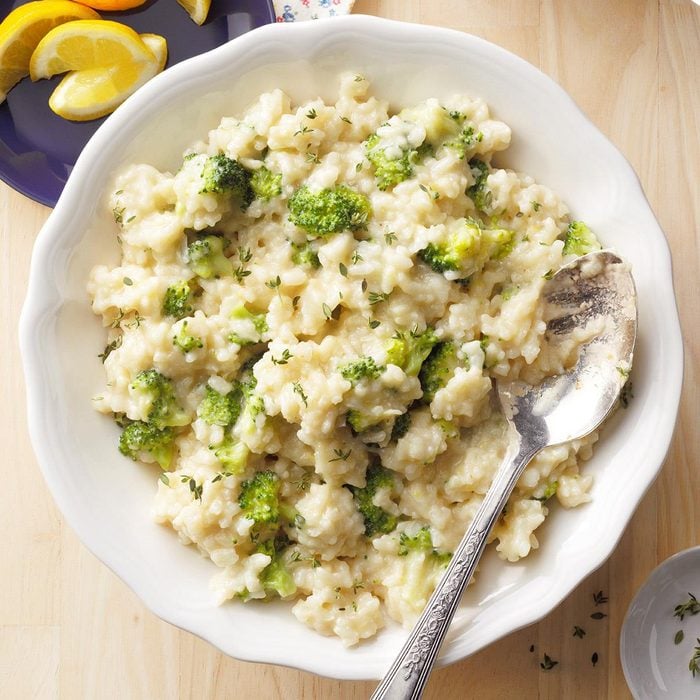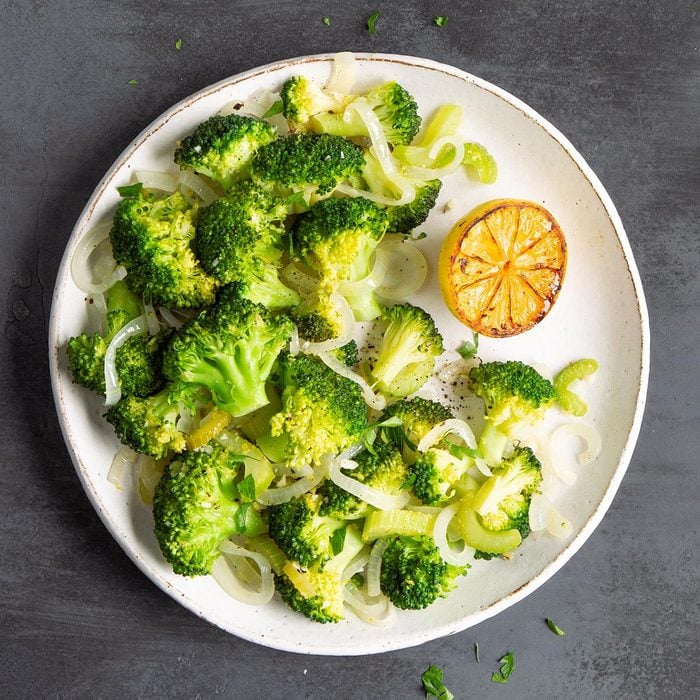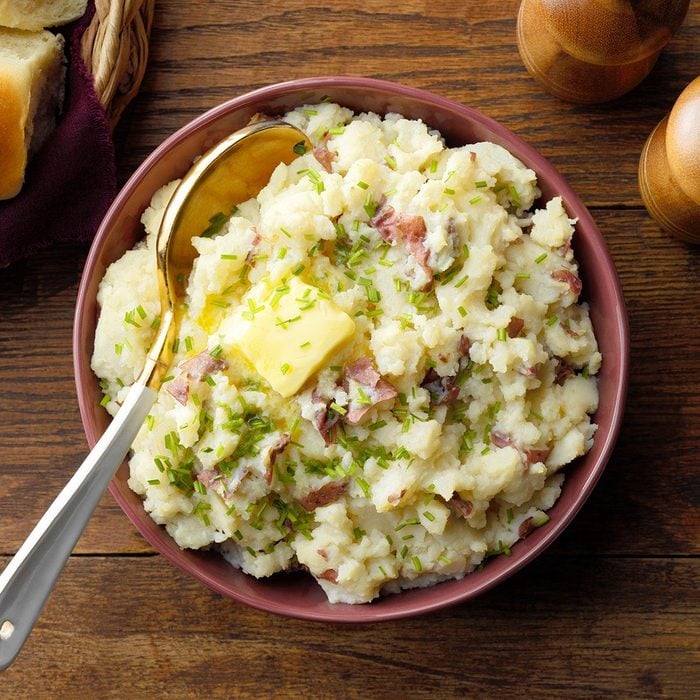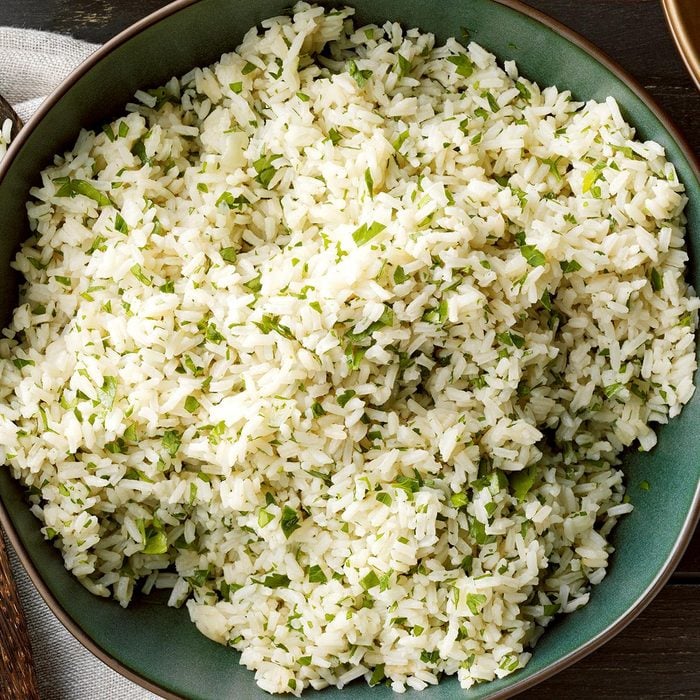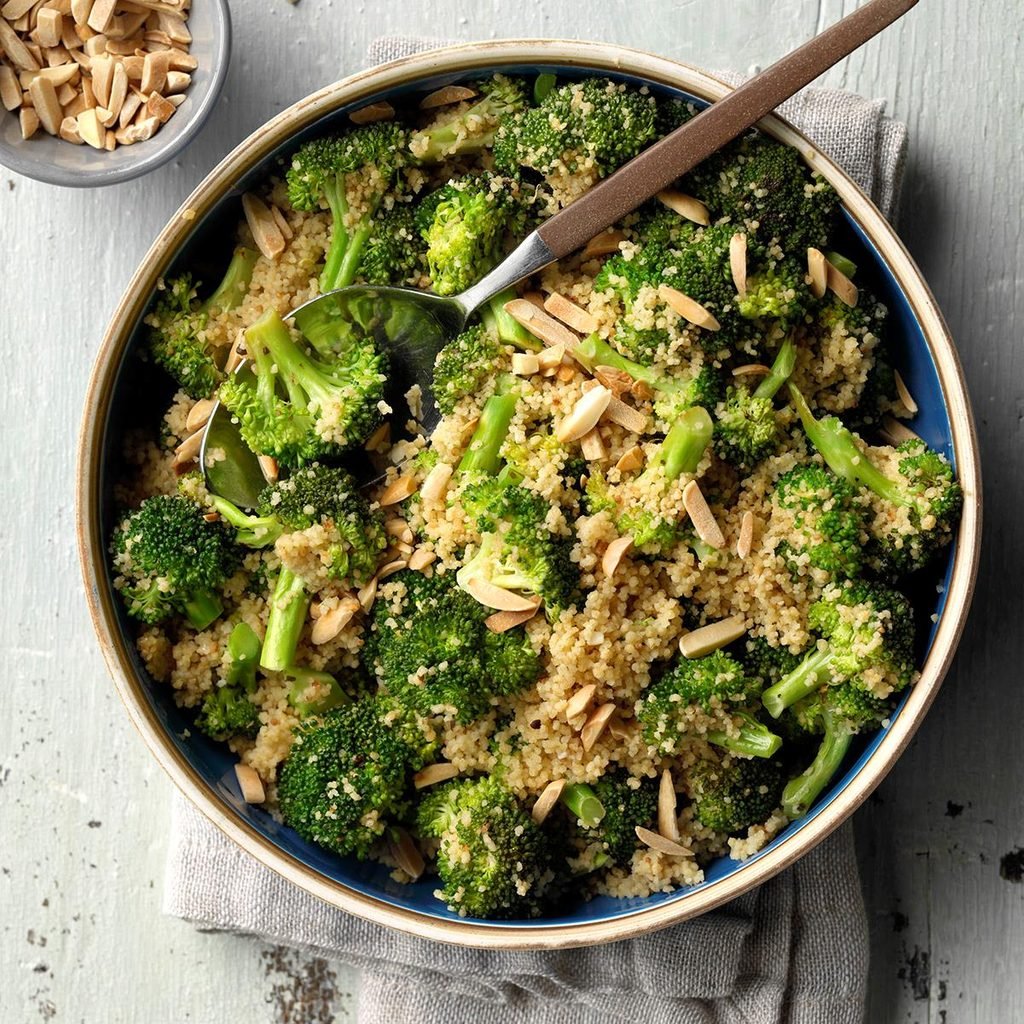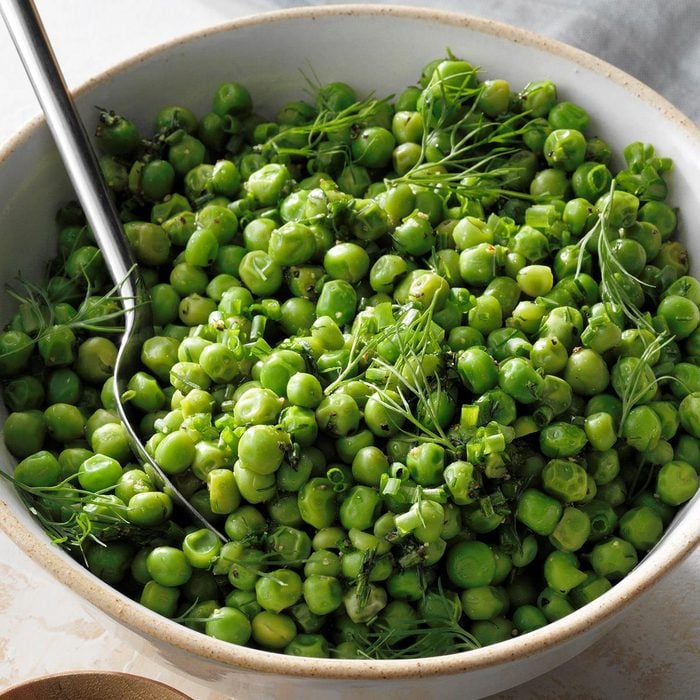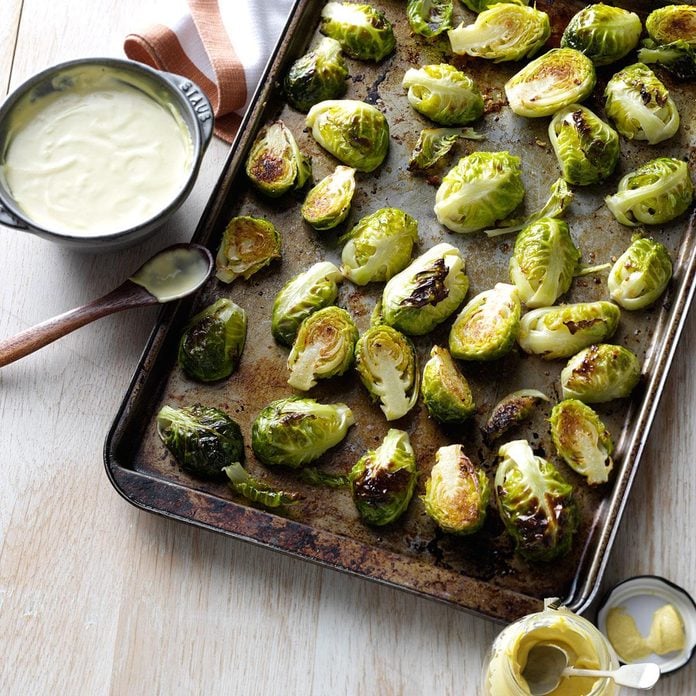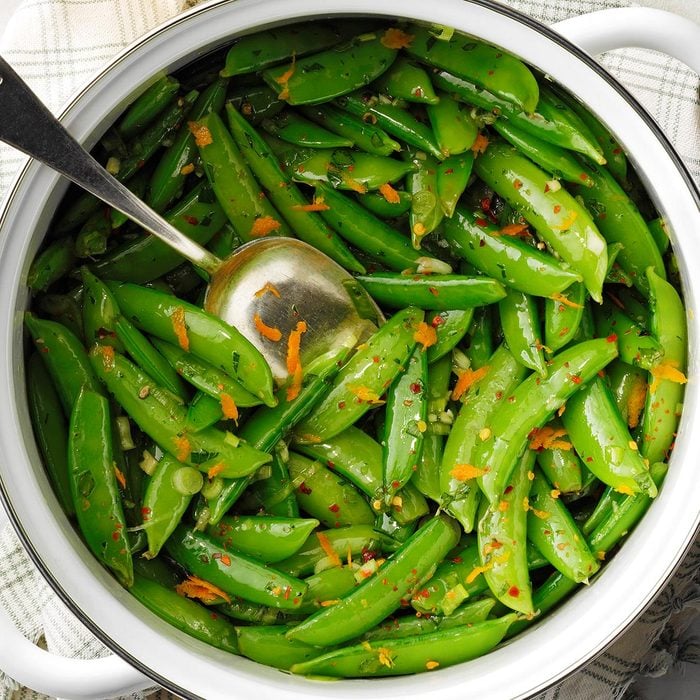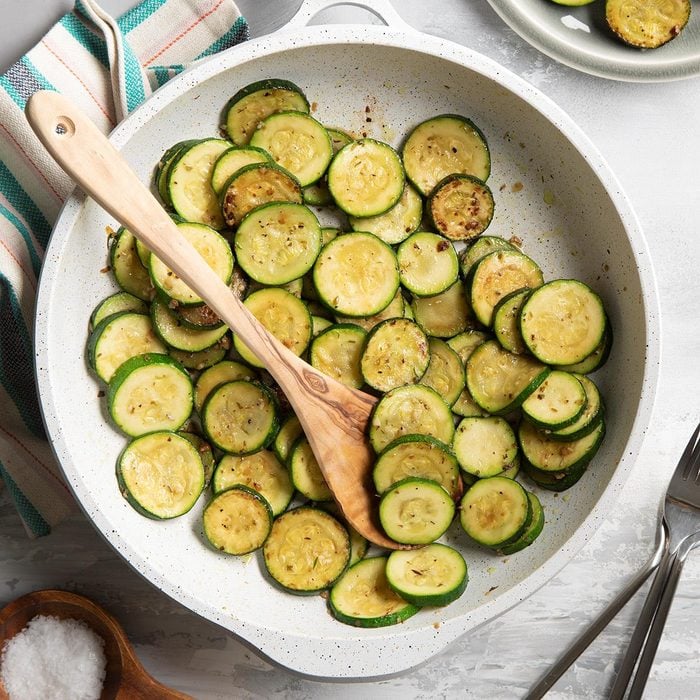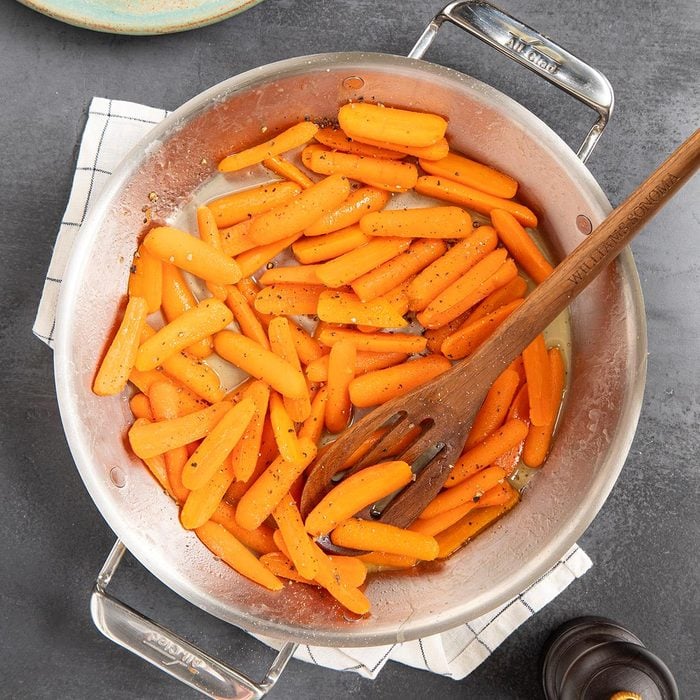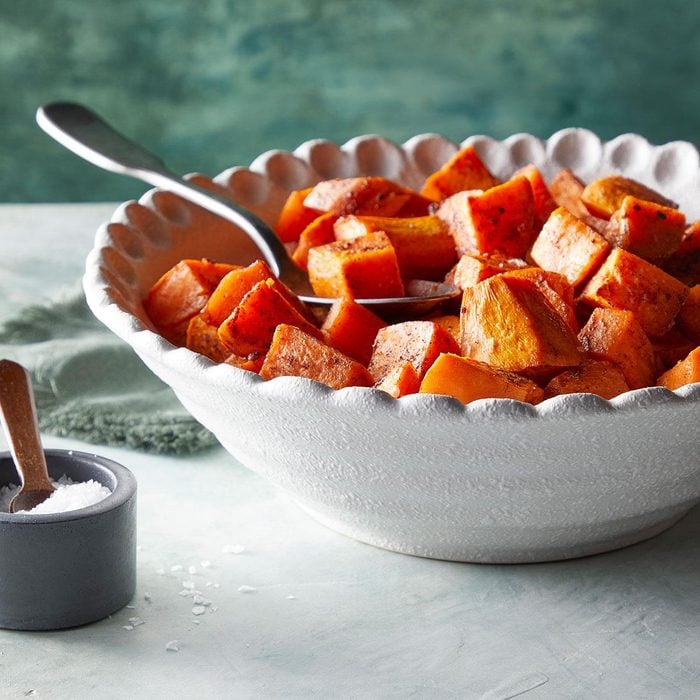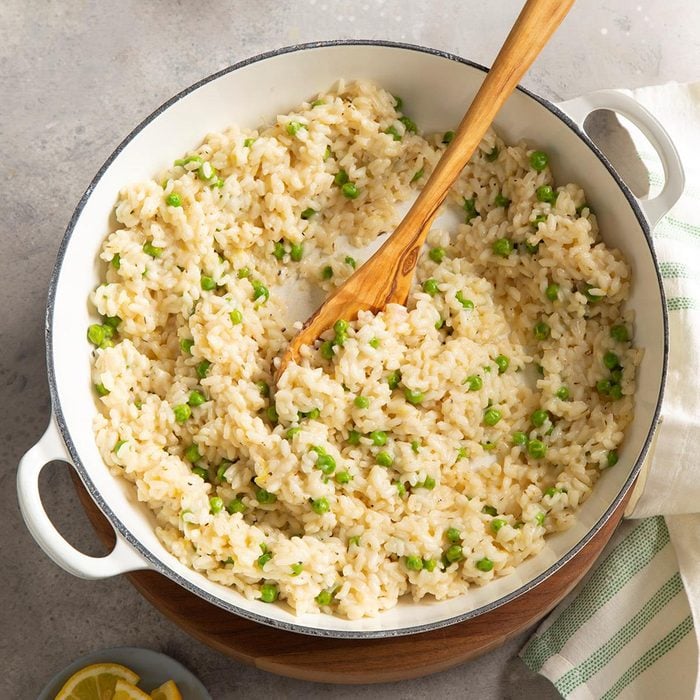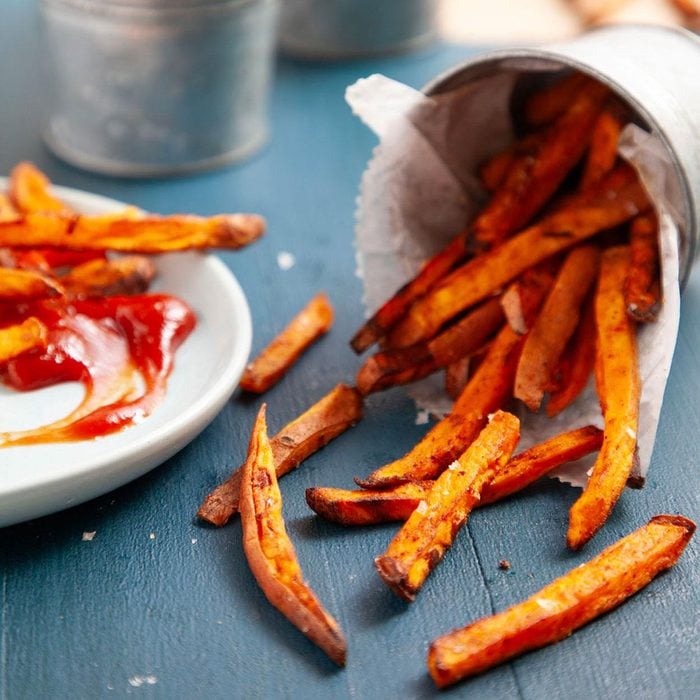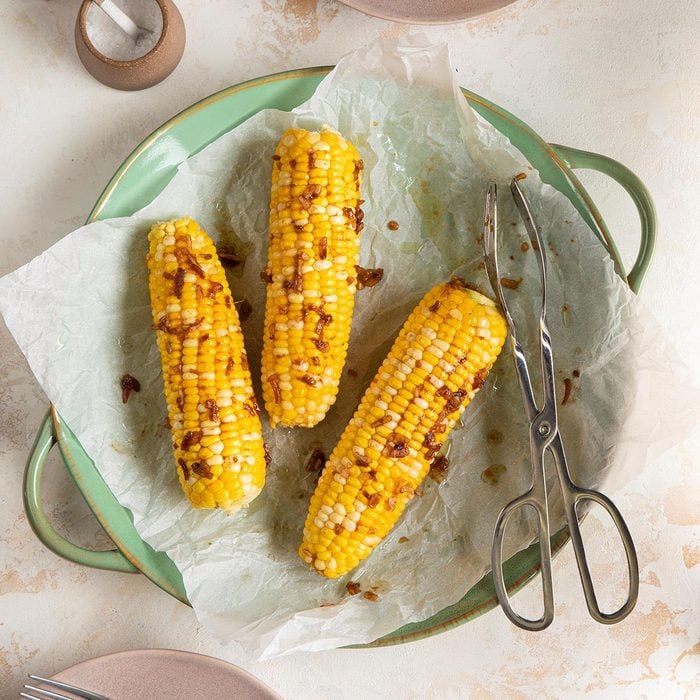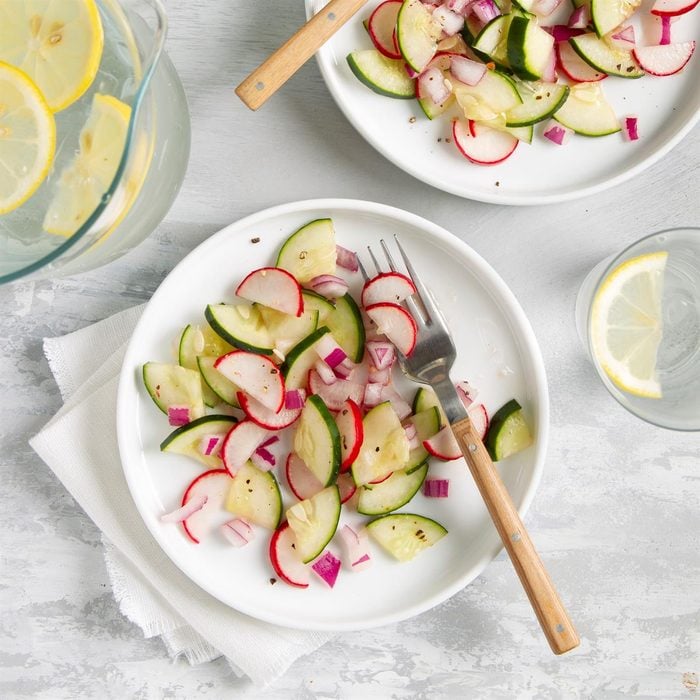If you’re looking for a healthy weeknight dinner, there’s nothing quicker than an easy salmon recipe. There are tons of benefits to eating more seafood, and with a lemon-butter sauce, it looks good and tastes delicious!
But when I pulled my latest salmon dinner out of the oven, it looked less flaky and more white and globby. If you’ve ever baked or roasted a salmon filet, you’ll know what I’m talking about. Which got me wondering—what exactly is that white stuff on salmon?
The White Stuff on Salmon is Perfectly Normal
To get an expert opinion, I spoke to our Executive Culinary Director Sarah Farmer, who explained that it’s a harmless protein called albumin. According to her, “It’s nothing to be scared of and it’s totally safe to eat, but I think we would all admit – it’s nasty.”
When salmon is raw, you can’t see the albumin inside—but as the fish cooks, it thickens and forms the gooey white stuff you see on salmon skin. When asked if there was any benefit to it, she explained that it’s made up of protein, but then again, so is the salmon. Her final word on it? “I’m going to opt for the fish and I’ll flake off the albumin, even though it could be a protein-booster, I suppose.”
If you’re not a fan of leaving the skin on the fish, learn how to remove the skin from salmon.
How to Make White Stuff-Free Salmon
Whether you’re cooking up a quick dinner for yourself or presenting it to other people, you always want your food to look inviting and appetizing. When it comes to salmon, stick to two rules to get your perfectly flaky, albumin-free crust: don’t cook salmon too quickly, and don’t overcook it—the flesh should separate easily into layers with gentle pressure from a fork. Brining salmon is one method of possibly reducing the albumin, as the salt breaks down the muscle fibers of the fish and keeps them from squeezing out the protein. If you have the time, you can try it–but since most of us don’t, it’s enough to keep these rules in mind.
Sarah’s preferred way of cooking salmon is oven-roasting it, keeping it low and slow. She starts with room-temperature fish, placing it skin side down to protect from direct heat, and she advises keeping an eye on the temperature of the fish. For tender, succulent salmon, cook to a medium doneness of 125°F. Pan-searing also works, but make sure to start skin side down before flipping to add some brownness if needed. Of course, you should always have a meat thermometer around to check the temperature, and a fork or tongs to check the tenderness of the fish.
Don’t forget to whip up one of these side dishes to go with your salmon!
Seasoned Red PotatoesTotal Time: 1 hour and 5 minutes
Main Ingredients: Red potatoes, butter, olive oil, spices
Level: Beginner
When roasted, red potatoes yield super crispy skin and creamy insides, making them one of our favorite side dishes. To achieve maximum crispiness, make sure the red potatoes are completely dry before you bake them.
"These simple but tasty potatoes are on the menu at my SideTrack Cafe in Metamora, Indiana. I've collected recipes for years, and this is a favorite." —Recipe contributor Nancy Johnson, Connersville, Indiana
Seasoned Green BeansTotal Time: 15 minutes
Main Ingredients: Green beans, spices
Level: Beginner
These flavorful green beans are proof that you don't need a lot of ingredients—or time—to turn out an impressive side dish. Coating steamed green beans with butter and seasoning you already have in your pantry results in something pretty spectacular.
"I like to add a little extra flavor to my green beans. And this mouthwatering recipe is one of the quickest and most delicious I have." —Recipe contributor Katherine Firth, Oro Ballay, Arizona
Lemon Risotto with BroccoliTotal Time: 55 minutes
Main Ingredients: Chicken broth, onion, arborio rice, lemon, broccoli, Parmesan
Level: Intermediate
Serving salmon with risotto recipes instead of your standard rice may take a good deal more effort, but the payoff is worth it. This lemony, creamy risotto is filled with broccoli—so you're basically getting two sides in one. We recommend serving this as a special occasion side dish.
"This dish is a creamy and rich party-special alternative to potatoes." —Recipe contributor Judy Grebetz, Racine, Wisconsin
Steamed Lemon BroccoliTotal Time: 20 minutes
Main Ingredients: Broccoli, onion, garlic, lemon
Level: Beginner
This steamed broccoli is anything but boring with its lively garlic-lemon sauce. Using both the juice and zest of the lemon amps up that bright flavor, and a healthy pat of butter will make this broccoli appeal to even the pickiest palates.
"I first tried this sunny side dish because it seemed to be a fresh, nutritious and easy combination. Now it's the only way my husband will eat broccoli. I love to pair it with grilled meat on hot days." —Recipe contributor Michelle Hanson, Oacoma, South Dakota
Garlic Mashed Red PotatoesTotal Time: 30 minutes
Main Ingredients: Red potatoes, garlic, butter, milk, Parmesan
Level: Beginner
Don't peel those delicious skins before making these creamy garlic mashed potatoes! They add so much wonderful texture and color, not to mention essential nutrients. We use fat-free milk in this recipe, but feel free to up the decadence by using full-fat milk or half-and-half. You can also experiment with the flavor profile by using olive oil instead of butter.
"These creamy garlic mashed potatoes are so good, you can serve them plain—no butter or gravy is needed. This is one of our favorite red potato recipes." —Recipe contributor Valerie Mitchell, Olathe, Kansas
Roasted Brussels Sprouts with BaconTotal Time: 30 minutes
Main Ingredients: Brussels sprouts, bacon, balsamic glaze
Level: Beginner
There are a few ways to cook Brussels sprouts, but this might be one of our favorites. If you don't have balsamic glaze on hand, you can make your own by simmering balsamic vinegar over medium heat with a bit of sugar until it thickens into a glaze.
"There are lots of ways to personalize this roasted Brussels sprouts with bacon recipe to your own tastes, but it all starts with perfectly roasted sprouts. Oven temps vary, so keep an eye on them to make sure they get crisp but don't burn." —Recipe contributor Karen Keefe, Phoenix, Arizona
Flavorful Green RiceTotal Time: 30 minutes
Main Ingredients: Long grain rice, parsley, green onion, chicken broth
Level: Beginner
This pretty, herb-packed rice goes wonderfully with citrusy salmon, and you can customize the herbs to your liking. Remember that the secret to fluffy rice is this: Don't stir as it simmers, as tempting as it is. Follow the recipe exactly as written.
"Green onions and parsley give this green rice its name, but the appealing flavor is what makes it memorable." —Recipe contributor Karin Bailey, Golden Colorado
Lemon Couscous with BroccoliTotal Time: 25 minutes
Main Ingredients: Broccoli, whole wheat couscous, lemon, almonds
Level: Intermediate
Fluffy couscous is one of our all-time favorite sides for any type of salmon, and this broccoli-packed dish makes it easy to get in a serving of veggies at the same time. You could easily serve the leftovers cold the next day as a couscous salad; mix in some flaked leftover salmon (or canned) and you have yourself a well-rounded lunch.
"I combined two recipes to create this side with broccoli and pasta. The splash of lemon adds nice flavor. Instead of toasted almonds, you could also sprinkle servings with grated Parmesan cheese." —Recipe contributor Beth Dauenhauer, Pueblo, Colorado
Tuscan-Style Roasted AsparagusTotal Time: 35 minutes
Main Ingredients: Asparagus, grape tomatoes, pine nuts, garlic, lemon, Parmesan
Level: Beginner
Elegant, simple and delicious, this asparagus dish is one of our favorite go-to sides. The pine nuts, garlic and lemon give it a Mediterranean twist. If you don't have asparagus on hand, you could use green beans; slivered almonds can work in place of the pine nuts.
"This is especially wonderful when locally grown asparagus is in season. It's so easy for celebrations because you can serve it hot or cold." —Recipe contributor Jannine Fisk, Malden, Massachusetts
Dill & Chive PeasTotal Time: 10 minutes
Main Ingredients: Frozen peas, dill, chives, butter
Level: Beginner
This super simple side is one of those recipes with frozen peas you can always rely on. Crisp peas get the upgrade they deserve with fresh herbs and butter, making it just elegant enough to serve with salmon en papillote.
"Growing my own vegetables and herbs helps keep things fresh in the kitchen, but frozen peas make this side a breeze to prepare." —Recipe contributor Tanna Richard, Cedar Rapids, Iowa
Garlic-Roasted Brussels Sprouts with Mustard SauceTotal Time: 20 minutes
Main Ingredients: Brussels sprouts, heavy cream, garlic, Dijon mustard
Level: Beginner
You'll want to make extra mustard sauce to drizzle over your salmon. Roasting the Brussels sprouts at a high temperature caramelizes them slightly and can convert even the bigger Brussels sprouts hater.
"Don't be afraid to bring out the roasted Brussels sprouts. Mellowed with mustard sauce, they may just delight even the most skeptical folks." —Recipe contributor Becky Walch, Orland, California
Szechuan Sugar Snap PeasTotal Time: 25 minutes
Main Ingredients: Sugar snap peas, peanut oil, sesame oil, orange zest, garlic, gingerroot, cilantro, cashews
Level: Beginner
The sweetness of the fresh sugar snap peas melds perfectly with the boldness of the garlic, red pepper flakes and ginger. Top this dish with a healthy drizzle of chili crisp for extra heat.
"Simple seasonings transform crisp, sweet sugar snap peas into an unbeatable side dish your family will love. Chopped walnuts can be used in place of the cashews." —Recipe contributor Jeanne Holt, Mendota Heights, Minnesota
Sauteed ZucchiniTotal Time: 15 min
Main Ingredients: Zucchini, garlic
Level: Beginner
Use up your homegrown or farmers market harvest of zucchini as a salmon side. While the recipe calls for dried oregano, choose from various types of herbs like basil, marjoram and thyme to change things up.
"I've found that this flavorful sauteed zucchini complements almost any main course, from chicken to fish. If you like, use half yellow summer squash for a colorful variation on classic zucchini recipes." —Recipe contributor Teresa Kraus, Cortez, Colorado
Honey-Glazed CarrotsTotal Time: 10 minutes
Main Ingredients: Baby carrots, butter, honey, lemon
Level: Beginner
We love time-saving microwave tricks, so use this side dish when you're in a hurry. Sweet, crisp-tender baby carrots do most of their cooking in the microwave and then finish in a buttery skillet.
"My mother used sugar in this recipe, but a local man who keeps bees on our farm shares honey with us so I use that instead to make honey-glazed carrots." —Recipe contributor Julie Anglen, Riverton, Wyoming
Sauteed Green BeansTotal Time: 20 minutes
Main Ingredients: Green beans, butter, garlic
Level: Beginner
Sauteeing green beans in butter rather than steaming makes them so much richer. While we love frozen green bean recipes, we recommend letting fresh green beans be the star of the show here.
"These sauteed green beans with garlic and a variety of herbs and spices come together in no time at all for a well-seasoned side dish you'll make on repeat." —Recipe contributor Heidi Wilcox, Lapeer, Michigan
Roasted Honey Sweet PotatoesTotal Time: 55 minutes
Main Ingredients: Sweet potatoes, honey
Level: Beginner
These roasted sweet potatoes are healthy and absolutely delicious. What's more, you already have all the seasonings to make it in your pantry: salt, pepper, cinnamon and honey. Many of our readers like to use half honey, half maple syrup to add a caramelly flavor. Be sure to stock up on the best honey so the sweetness shines through.
"Cinnamon and honey bring out the natural earthy sweetness of sweet potatoes in this simple, elegant side dish." —Recipe contributor Laura Mifsud, Northville, Michigan
Pea Risotto with LemonTotal Time: 40 minutes
Main Ingredients: Chicken broth, shallots, butter, arborio rice, frozen peas, Parmesan, lemon
Level: Intermediate
When you're tired of rice as a side dish, risotto acts as a wonderfully creamy base for salmon. Keep things seasonal with peas, and use freshly grated Parmesan instead of preshredded for the best texture.
"Lemon adds a refreshing taste to this lovely pea risotto dish that's perfect for spring." —Recipe contributor Sue Dannahower, Fort Pierce, Florida
Oven-Roasted CarrotsTotal Time: 50 minutes
Main Ingredients: Baby carrots, onions, garlic, white wine vinegar
Level: Beginner
These gorgeous oven-roasted carrots are caramelized perfection. To balance the sweetness of the carrots with a bit of heat, add 1/2 teaspoon chili powder and a dash of cayenne pepper.
"My seven children and 15 grandchildren really look forward to these oven-roasted carrots. As a cook at our local school, I serve two generations of my family, plus relatives and friends from all over our area." —Recipe contributor Marlene Schott, Devine, Texas
Air-Fryer Sweet Potato FriesTotal Time: 20 minutes
Main Ingredients: Sweet potatoes, seasoning
Level: Beginner
Crispy sweet potato fries are one of our favorite air-fryer side dishes, and it's all because of the seasoning. If you don't have sweet potatoes on hand, you can easily use frozen—just add an extra five minutes of cook time.
"I can never get enough of these air-fryer sweet potato fries! Even though my grocery store sells them in the frozen foods section, I still love to pull sweet potatoes out of my garden and slice them up fresh!" —Recipe contributor Amber Massey, Argyle, Texas
Buttery-Onion Corn on the CobTotal Time: 20 minutes
Main Ingredients: Corn, butter, onion soup mix
Level: Beginner
Just when we think we've discovered every genius use for onion soup mix, we find another one. This buttery corn on the cob becomes irresistible after roasting at a high heat in the oven. (Not confident peeling the husks? Here's our guide to shucking corn.)
"My mother has been making this recipe for years. Every time I make it for company, they rave and can't believe how easy it is!" —Recipe contributor Lisa Denson, Decatur, Alabama
Radish Cucumber SaladTotal Time: 10 minutes
Main Ingredients: Cucumber, radishes, red onion, lemon
Level: Beginner
Chilled radish recipes in the warmer months really hit the spot. This crunchy, satisfying summer salad goes wonderfully with grilled salmon and just about any other protein. If you're radish-averse, here's a tip: The thinner you slice the radishes, the more you'll be able to offset some of their bitterness. You can also salt and drain your cut radishes before mixing them into the salad.
"I put this cucumber radish salad together with vegetables I had left in my garden. My family liked it so much, I started taking it to community suppers and was often asked for the recipe. It's a refreshing accompaniment for any entree." —Recipe contributor Mildred Sherrer, Fort Worth, Texas
Grilled Potato and Corn SaladTotal Time: 1 hour 10 minutes
Main Ingredients: Potatoes, poblanos, sweet corn, sour cream, mayonnaise, onions, Cotija cheese, cilantro, lime
Level: Advanced
We love to eat grilled salads in the summer, and this take on the classic potato salad will become a staple among all your cookout recipes. Packed with salty Cotija cheese, smoky grilled poblanos, lime and cilantro, you're going to want to make this while you grill salmon or make salmon burgers.
"Corn salad and potato salad are two summer classics. I smashed them together for a crowd-pleasing side that we love with burgers. Locally sourced ingredients from the farmers market make it extra special." —Recipe contributor Donna Gribbins, Shelbyville, Kentucky
Kansas Cucumber SaladTotal Time: 10 minutes
Main Ingredients: Miracle Whip, cucumbers, green onions, cider vinegar
Level: Beginner
Don't knock Miracle Whip until you've tried it in this salad—it makes the perfect tangy, creamy dressing for chopped cucumbers. This recipe uses dill weed and green onion, but don't be afraid to get creative with your seasoning and herb choice.
"Cucumbers are my very favorite garden vegetable, so I use this recipe often. I got it from a friend years ago. I've heard this refreshing dish keeps very well in the refrigerator, but it goes so fast around our house, I've never found out for myself." —Recipe contributor Karen Ann Bland, Gove, Kansas
Kale Quinoa SaladTotal Time: 40 minutes
Main Ingredients: Tomato juice, quinoa, kale, pine nuts, dried currants
Level: Intermediate
Cooking quinoa in a mix of water and tomato juice takes so much blandness out of the grain. If you can't get your hands on dried currants, dried cranberries and raisins work just as well, and sunflower seeds can be swapped in for the pine nuts. This dish will turn everyone in your family into a kale lover.
"Here's a holiday side dish you can feel good about serving. Kale packs a mighty punch of vitamins, while quinoa delivers a hearty serving of protein. Best of all, the flavor of this kale quinoa salad can't be beat!" —Recipe contributor Lisa Warren, Washington, DC
FAQs
What is salmon usually served with?
The quintessential salmon dinner probably includes asparagus and rice when you picture it. That's because salmon's mild flavor pairs well with the buttery crunch of asparagus and lightly seasoned rice. When you're deciding on various sides to serve with salmon, keep the mild fattiness of the fish in mind. You don't want to overpower it, so lightly seasoned grains, buttery or oiled pastas and crunchy greens are the top choices. Intensely spiced vegetables or super cheesy pasta dishes will overwhelm the tender salmon.
What enhances the flavor of salmon
Lemon and other citrus flavors pair beautifully with salmon due to their light and refreshing profiles. Because of this, many citrusy sides also pair well with the fish (think of lime-drizzled rice and lemony risotto). Sweet and smoky marinades or dry rubs also give salmon a tasteful twist and give you the opportunity to pair more strongly flavored foods with it. To balance and enhance a balsamic glazed salmon, for example, plate it with honey-roasted sweet potatoes or maple-glazed Brussels sprouts.
